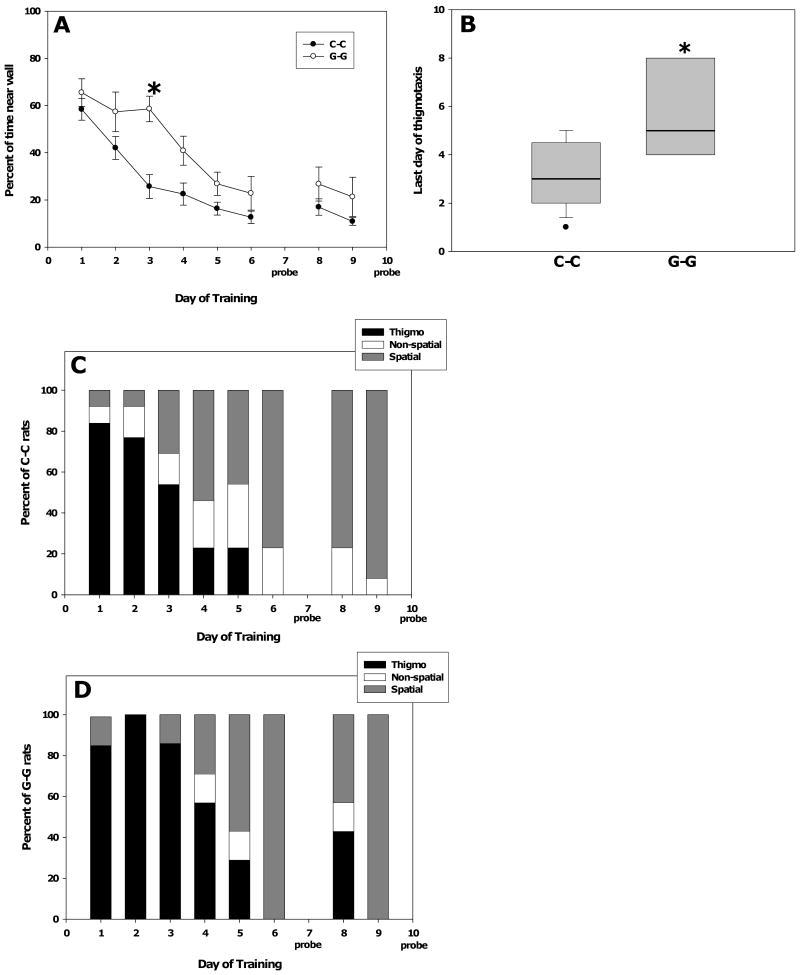Fig. 6.
Swim path analysis of hidden platform acquisition trials. (A) Exposure to genistein during both gestation and lactation (G-G) significantly increased thigmotaxis on day 3 of training relative to controls. Asterisk indicates p < 0.05 by the Tukey post hoc test. Data are the mean ± SEM. (B) Swim path identification showed that rats exposed to genistein through both gestation and lactation (G-G) had their last day of relying on thigmotactic swimming significantly later than C-C rats. Asterisk indicates p = 0.007 (Mann-Whitney test). The bold horizontal line in each box indicates the median. Boxes extend to the 25th and 75 percentiles. Whisker caps extend to the 10th and 90th percentiles. The data point is a subject that was below the 10th percentile. (C-D) Swim paths were identified and categorized for C-C (panel C) and G-G (panel D) rats as described in the Methods. The stacked bars in the graph show the percentage of rats that used thigmotaxis (black), non-spatial (white), or spatial (gray) strategies on the first trial of each training day. Note that on days 3 and 4 thigmotaxis is disappearing as a strategy to a greater extent in the C-C rats.

